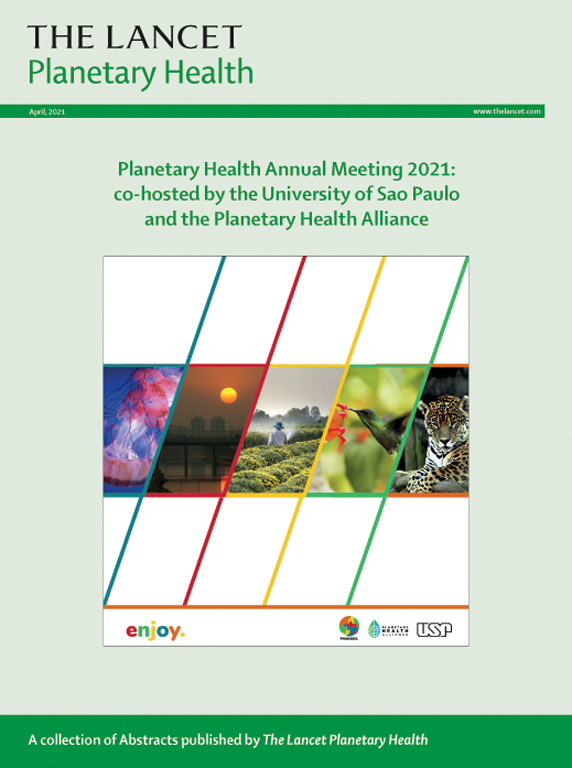Effects of global treaties on commercial chemicals widely used as additives: a meta-analysis of historical measurements of polybrominated diphenyl ethers
IF 21.6
1区 医学
Q1 ENVIRONMENTAL SCIENCES
引用次数: 0
Abstract
Background
Commercial organic additives, many of which possess persistent, bioaccumulative, and toxic (PBT) features, are widely used in various products. Although some PBT chemicals have been restricted, the risks associated with long-term exposure remain. Polybrominated diphenyl ethers (PBDEs) are flame retardants in electronics, textiles, and many everyday products. They are a typical class of ubiquitous additive chemicals with PBT characteristics. PBDEs include three commercial formulations: penta-BDE, octa-BDE, and deca-BDE. Penta-BDE and octa-BDE were banned in most countries in the early 2000s and listed under the Stockholm Convention in 2009 with recycling exemptions. Deca-BDE was banned later, with the USA starting to phase it out in 2009, and was added to the Convention in 2017 only with exemption for inclusion in vehicle parts until 2036. We conducted a meta-analysis and systematic regression analysis to explore the impact of global policies and treaties on both internal (human) and external (environmental) exposure to PBDEs.
Methods
On Jan 4, 2023, we conducted a search of electronic databases including Web of Science, Scopus, Embase, and PubMed, along with grey literature. The search results were updated on March 21, 2025. The inclusion criteria focused on studies reporting PBDE concentrations in indoor dust (a major source of external exposure) and in the human body (internal exposure). We collated concentration data of major PBDE congeners, which are present in different formulations of flame retardants used in different products, including BDE-47, BDE-99, BDE-153, BDE-183, and BDE-209. We used a breakpoint regression model to analyse the temporal trends of PBDEs and compared these trends with the timeline of national and regional policies.
Findings
We identified 9782 studies, of which 343 were included, covering data from 94 countries worldwide. Marked differences were observed in PBDE internal and external exposure across countries. Using the EU, China, and the USA as examples, we summarised the general temporal patterns of large-scale indoor emissions (which dominate exposures of the general population) of different PBDE congeners and their effects on human exposure, correlating with treaty, production, and usage schedules. The results indicate that PBDE emissions in indoor environments have decreased following policy interventions, but reductions in human PBDE levels have been delayed and slow. Using breakpoint regression modelling, we identified a significant turning point in the concentrations of low-brominated PBDEs (BDE-47: 1996 [95% CI 1991–2001], p<0·0001; and BDE-99: 1997 [1992–2003], p<0·0001) in human milk in the EU. Significant decreases were observed in both China (BDE-47, p=0·0008; BDE-99, p=0·011) and the USA (BDE-47, p=0·0023; BDE-99, p=0·041). However, no decreasing trend over time was evident for BDE-153, nor for the higher-brominated BDE-183 (except in the EU: p=0·010) and BDE-209. In adult serum, PBDE concentrations showed minimal decreases, with only BDE-183 showing a significant decline in the EU (p=0·0099).
Interpretation
Long-term emissions from treated products with large stocks of these chemicals after bans, along with the bioaccumulation of PBDEs (especially BDE-153), have significantly delayed the effectiveness of treaties in eliminating human exposure and health risks. Moreover, regionally varied policy enforcement and consumption patterns have further reduced effectiveness of these treaties on a global scale. The chemical diversity of different PBDE congeners also affects the effectiveness of the bans. Currently, there is a paucity of systematic longitudinal studies to evaluate the effectiveness of monitoring at both global and national levels. This study highlights the need for more cautious and stringent chemical regulations and a unified global monitoring and management framework in the future, to better regulate commercial additives.
Funding
National Natural Science Foundation of China (42377362) and Shanghai Oriental Talent Program-Youth Project.
全球条约对广泛用作添加剂的商业化学品的影响:多溴联苯醚历史测量的荟萃分析
商业有机添加剂被广泛应用于各种产品中,其中许多具有持久性、生物蓄积性和毒性(PBT)的特征。虽然一些PBT化学品受到限制,但长期接触的风险仍然存在。多溴联苯醚(PBDEs)是电子产品、纺织品和许多日常用品中的阻燃剂。它们是一类典型的具有PBT特性的普遍存在的添加剂化学品。多溴二苯醚包括三种商业配方:五溴二苯醚、八溴二苯醚和十溴二苯醚。早在21世纪初,五溴二苯醚和八溴二苯醚就在大多数国家被禁用,并于2009年被列入《斯德哥尔摩公约》(Stockholm Convention),豁免回收利用。随着美国在2009年开始逐步淘汰Deca-BDE, Deca-BDE随后被禁止,并于2017年被加入公约,只是在2036年之前豁免在汽车零部件中使用。我们进行了荟萃分析和系统回归分析,以探讨全球政策和条约对多溴二苯醚内部(人类)和外部(环境)暴露的影响。方法于2023年1月4日检索Web of Science、Scopus、Embase、PubMed等电子数据库及灰色文献。搜索结果于2025年3月21日更新。纳入标准侧重于报告室内粉尘(外部暴露的主要来源)和人体(内部暴露)中多溴二苯醚浓度的研究。我们整理了BDE-47、BDE-99、BDE-153、BDE-183和BDE-209等不同阻燃剂配方中主要多溴二苯醚同系物的浓度数据。我们使用断点回归模型分析了多溴二苯醚的时间趋势,并将这些趋势与国家和地区政策的时间线进行了比较。研究结果:我们确定了9782项研究,其中343项被纳入,涵盖了全球94个国家的数据。各国在多溴二苯醚内部和外部暴露方面观察到显著差异。以欧盟、中国和美国为例,我们总结了不同多溴二苯醚同系物的大规模室内排放(占一般人群暴露的主导地位)的一般时间模式及其对人类暴露的影响,并与条约、生产和使用时间表相关联。结果表明,在政策干预后,室内环境中多溴二苯醚的排放量有所减少,但人类多溴二苯醚水平的减少却有所延迟和缓慢。使用断点回归模型,我们确定了低溴多溴二苯醚浓度的显著转折点(BDE-47: 1996 [95% CI 1991-2001], p< 0.0001;BDE-99: 1997 [1992-2003], p< 0.0001)。中国的BDE-47显著下降(p= 0.0008;BDE-99, p= 0.011)和USA (BDE-47, p= 0.0023;12 - 99, p = 0·041)。然而,BDE-153、高溴化BDE-183(欧盟除外:p= 0.010)和BDE-209均无明显下降趋势。在成人血清中,PBDE浓度略有下降,只有BDE-183在EU中有显著下降(p= 0.0099)。禁令实施后,含有大量此类化学品的经处理产品的长期排放,以及多溴二苯醚(特别是BDE-153)的生物积累,严重推迟了条约在消除人类接触和健康风险方面的效力。此外,政策执行和消费模式的区域差异进一步降低了这些条约在全球范围内的效力。不同多溴二苯醚同系物的化学多样性也影响禁令的有效性。目前,缺乏系统的纵向研究来评价全球和国家两级监测的有效性。这项研究强调了未来需要更谨慎和严格的化学品法规以及统一的全球监测和管理框架,以更好地监管商业添加剂。国家自然科学基金项目(42377362)和上海市东方人才计划青年项目。
本文章由计算机程序翻译,如有差异,请以英文原文为准。
求助全文
约1分钟内获得全文
求助全文
来源期刊

Lancet Planetary Health
Multiple-
CiteScore
28.40
自引率
2.30%
发文量
272
审稿时长
8 weeks
期刊介绍:
The Lancet Planetary Health is a gold Open Access journal dedicated to investigating and addressing the multifaceted determinants of healthy human civilizations and their impact on natural systems. Positioned as a key player in sustainable development, the journal covers a broad, interdisciplinary scope, encompassing areas such as poverty, nutrition, gender equity, water and sanitation, energy, economic growth, industrialization, inequality, urbanization, human consumption and production, climate change, ocean health, land use, peace, and justice.
With a commitment to publishing high-quality research, comment, and correspondence, it aims to be the leading journal for sustainable development in the face of unprecedented dangers and threats.
 求助内容:
求助内容: 应助结果提醒方式:
应助结果提醒方式:


